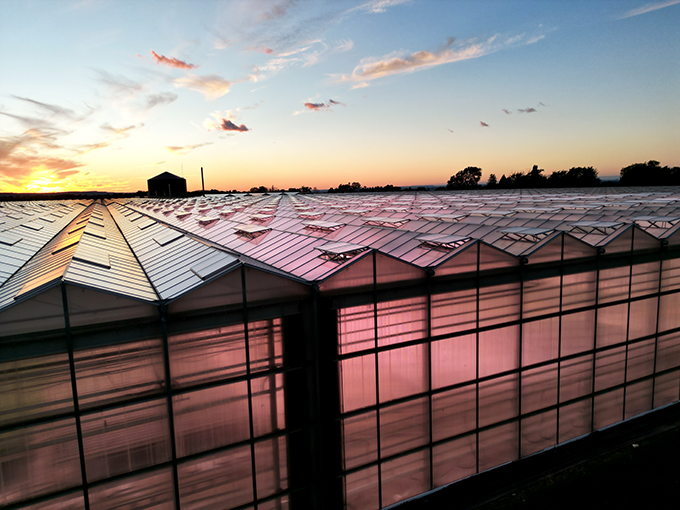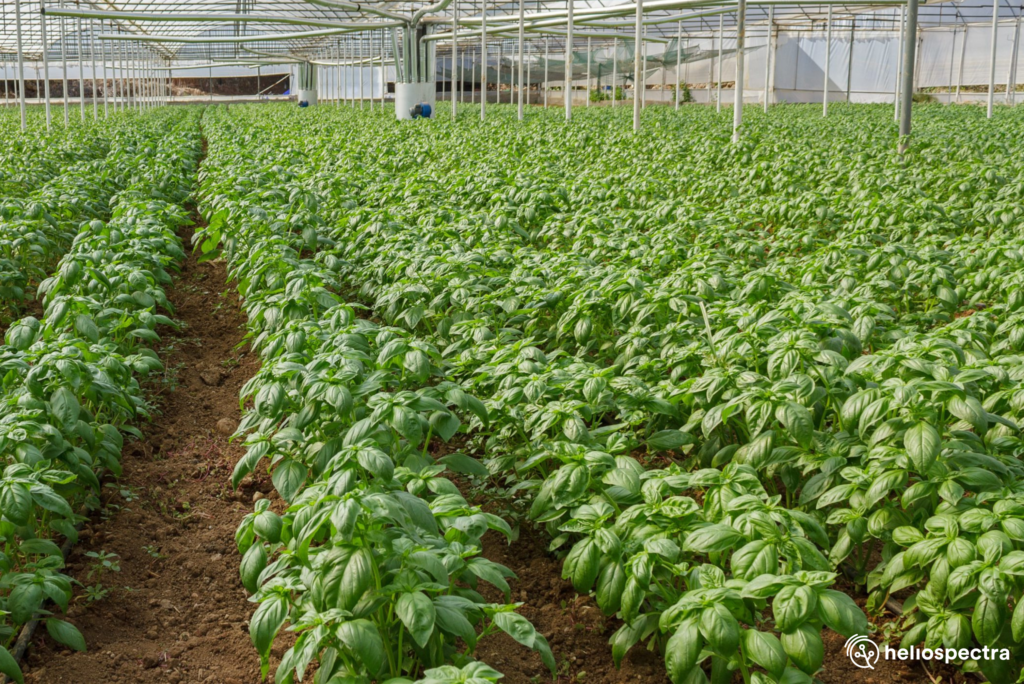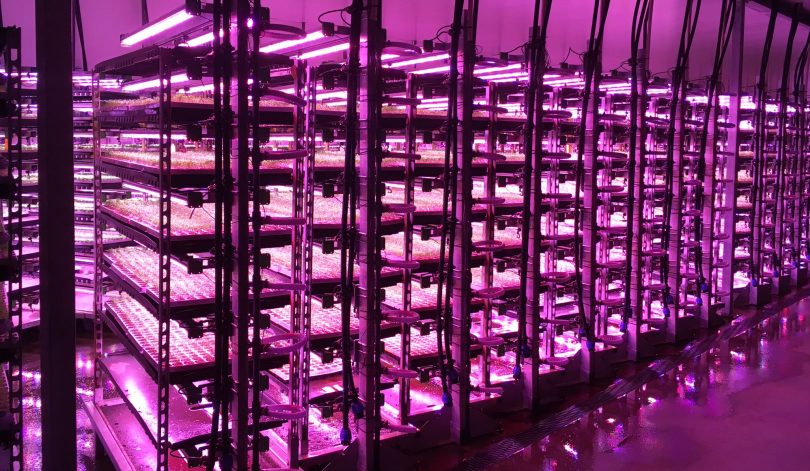Research
Articles
When considering horticultural lighting for a greenhouse or indoor grow facility, the decision almost always comes down to HPS vs LED. Choosing between a traditional HPS lighting system or a new LED technology can be very complicated. Many factors must be taken into consideration. But what if you didn’t have to choose? A hybrid lighting system may be just what you need right now to achieve both your business and growth goals.
The Key Differences Between HPS and LED Lights
HPS lights can meet crop and budget needs in the shorter term, but growers taking a longer-term approach generally choose LED grow lights, because they are more energy and cost-efficient, deliver optimal light with better spectral control, and produce higher quality plants year round. Here is a breakdown of the key differences between the two technologies:
TECHNOLOGY COMPARISON AT-A-GLANCE
HPS Lighting
LED Lighting
Static Spectrum:
Generally emits the same wavelengths as streetlights and industrial lighting, with little flexibility
Customizable Spectrum:
Designed to deliver the right wavelengths to optimize crop performance and control, with almost limitless flexibility
Higher Operating Temperatures:
Radiates considerable heat
Lower Operating Temperatures:
Adds very little heat to your grow facility
Higher Energy Consumption:
Uses higher levels of energy to create light that plants can use
Lower Energy Consumption:
Uses up to 55% less energy to generate the same level of light as HPS
Shorter Lifespan:
Ballast and light setups last 10,000 hours on average. Bulbs need to be replaced 1-2 times per year to maintain effectiveness
Longer Lifespan:
Frequently runs for 10 years before needing replacement. Rated or certified to run 50,000+ hours
Higher Maintenance:
Requires removal and cleaning of reflectors to maintain light efficacy, as well as replacement of bulbs, ballasts, and drivers as needed
Lower Maintenance:
Have no parts that need to be removed for servicing or cleaning. Since they do not require bulb, ballast, or driver replacements, fewer consumables are used
Why Choose to Implement Hybrid Lighting?
If LEDs are superior in most aspects and applications, why would growers consider a hybrid lighting strategy that uses both? Many growers are interested in switching to LED technology but cannot commit to the higher upfront capital expenditure (CapEx) for LEDs, despite the long-term energy and cost savings. Depending on the grower’s budget, facility, and crops it may be beneficial to implement a hybrid lighting strategy.
Existing HPS Lighting Infrastructure
Since LEDs produce little heat they can be placed close to plants, so infrastructure can be smaller. However, many growers have existing HPS lights in their greenhouses or indoor grow spaces. For growers who wish to have the benefits of LEDs without the CapEx cost of replacing every HPS lamp, a hybrid lighting strategy can make good sense. Retaining existing HPS lighting, LEDs could be installed in critical locations or alternated with the HPS lamps. A partial LED retrofit would also allow the grower to take advantage of the many rebates and incentives available for switching to a more energy-efficient lighting system.
Reliance on Radiant Heating from HPS
To develop and grow properly, plants need the right temperature at every growth stage. The significant amount of heat radiated by HPS and the relatively cool operation of LED can help you achieve this in a hybrid lighting environment throughout the seasons. For example, in colder months the heat from HPS lighting can offset HVAC use. In those months a hybrid lighting strategy of HPS and LED would enable you to take full advantage of the benefits of supplemental LED lighting and spectral control, all while reducing your heating requirements with HPS lighting. Conversely, in warmer months when crops still need supplemental light but not the supplemental heat, cooler LEDs can be used to provide the necessary DLI and photoperiod while not overheating the facility.
Improved Spectral Control
Hybrid lighting can help you optimize the quality of light that your plants receive. Crops require specific spectrums of light at every growth stage. As with supplemental heat, the supplemental light you supply will depend on the crop, growth stage, time of year, geographic location, and other factors. When it comes to providing the quality of light your plants need, HPS simply cannot deliver a highly customized spectrum. In fact, when you look at PAR (photosynthetically active radiation) – the blue, green, and red range on the spectrum – only 6% of the light emitted by HPS lamps is blue light. By providing very little blue light, HPS lamps are depriving plants of a critical wavelength that governs growth.
Suppose, for example, you would like to promote more compact growth with blue light, adding customizable LEDs to your facility would enable you to achieve this. If you wanted to induce fruiting by introducing more red and far-red light, this would be achievable with a hybrid lighting solution that includes customizable LEDs. Especially during low-light seasons when full-spectrum sunlight may be lacking, augmenting your HPS lighting with LEDs can provide an effective and energy-efficient way of achieving your desired crop results.
Long-Term Cost Effectiveness
Five years ago, a prominent research team that included Bruce Bugbee, Ph.D., and Erik Runkle, Ph.D., found that changing from HPS to LED could reduce costs by more than 50% and provide payback in just 2 to 3 years. Since then, LED grow lamps have continued to increase in efficiency and cost-effectiveness. The US Department of Energy asserts that although “high first-cost” can be a barrier to LED adoption, LED usage drives “reduced energy and maintenance costs, resulting in the lower total cost of ownership.” Additionally, available rebates and incentives can help offset the upfront CapEx costs of adding LEDs to your facility, while you reap the long-term benefits of fixtures that last longer, are more economical to run, and produce consistently better quality crops by providing the light your plants need.
A Good Hybrid Lighting Strategy Will Help You Get the Most from Your Crops
No matter which lamps you choose, you should always ask the manufacturer for a Light Plan. Our helioCARE™ team of experts can build a customized hybrid lighting strategy and accompanying support plan to help you achieve continuous quality and production improvements throughout the growing season. Let’s talk.
Get in touch with us!
From custom light planning, to tailored quotes, and everything in between,
our team of horticulture experts are always ready to assist.







